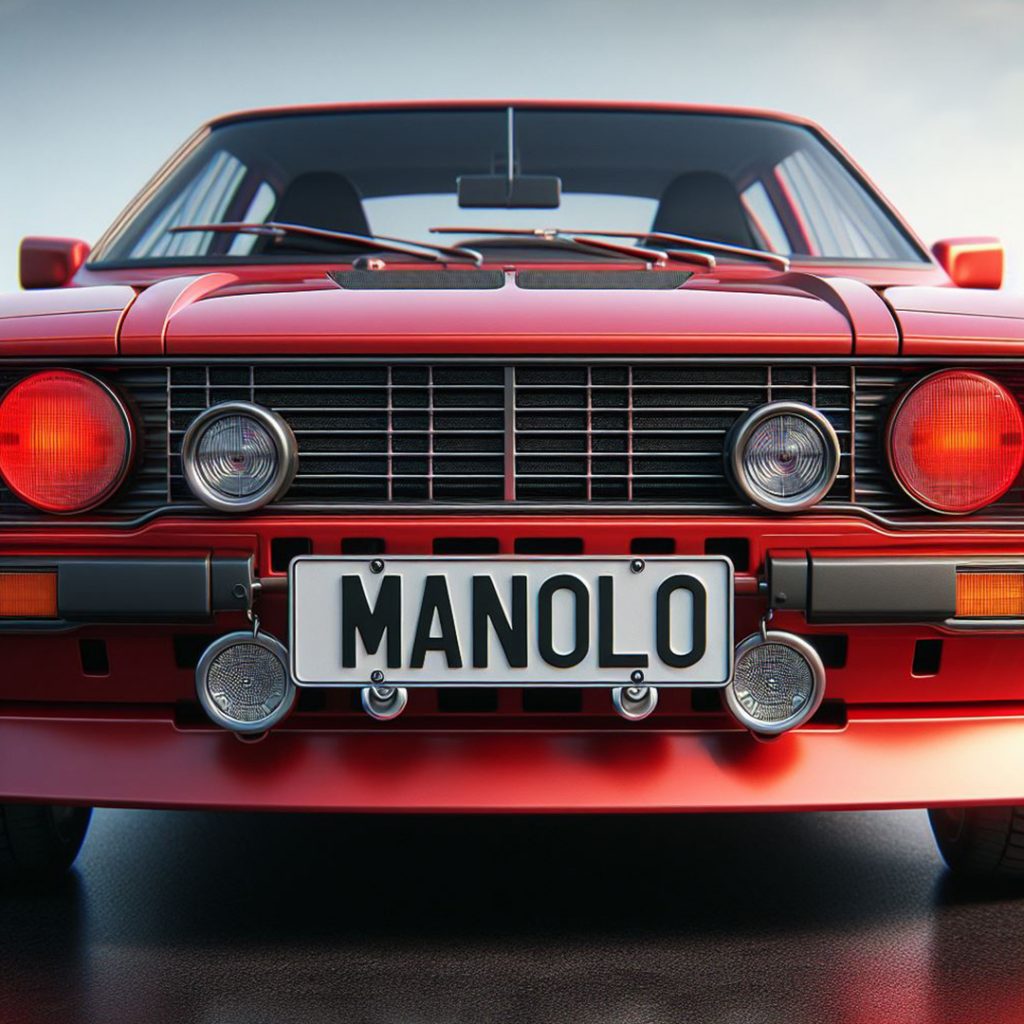Your car looks like its name is Braulio

For some people, their car is something so familiar and to which they feel so attached that they are not satisfied with calling it just that, a car; they need to give it a name. Perhaps it also has to do with that atavistic need of human beings to name everything that surrounds us. If we named the lion, the tree and the stone, how could we not look for a name for our main means of transportation?
In countries where it is allowed to personalize license plates, such as the United States, vehicle owners proudly display their ideas for the whole world to see. In this way, it goes beyond the personal and family sphere. But giving a car an affectionate nickname to personify it seems to be a universal custom. There’s even International Car Naming Day, which takes place on October 2nd.
According to research by the DVLA (Driver and Vehicle Licensing Agency) in the United Kingdom, carried out in 2018, it is women who are most likely to name their car (65%) compared to men (35%). A similar result emerged from a study by the insurance company Direct Seguros in Spain: 68% of women compared to 32% of men. For many people who choose to name their car, it is important that the external appearance of their front grilles has features that are reminiscent of a human expression (usually a smiling face), which helps to anthropomorphize them.
Whatever the reasons, the truth is that the sources of inspiration when it comes to naming names seem to be shared by most drivers, although the way of expressing them varies in each language.

THE COLOR
When looking for a name to identify the car, many owners turn to the color of the vehicle. Bluey, Silver Bullet, Scarlet, Big Red, Black Betty… are some of the names that refer to the body color most used by drivers in English-speaking countries, such as the United States. Tomatito, Copito de Nieve, Pitufo and Naranjito are the favorites in Spain.
THE BRAND
The model or make of the vehicle is also a good source of ideas when it comes to nicknaming the car. Lexie (Lexus), Mazzy (Mazda), Mitzy (Mitsubishi), Tiggy (Volkswagen Tiguan)… are some of the favorite names of drivers in Australia and the United Kingdom, for example. In Spain, diminutive names are successful, such as Forito (Ford), Leoncito (Seat León) and Golfito (Volkswagen Golf), among others.
HUMOR
Making fun of the vehicle’s exterior appearance, its age or its limitations also serves to give it a name. “Grandad” gives an idea of the age of the car, for example. The Bullet usually alludes ironically to the low speed that the car in question reaches. As does calling your old, beat-up car The Beast, which is more about having a laugh than providing an accurate description of the vehicle. Jocular names are also popular in English: The Flying Banana and Speedy are two examples.



CARTOONS AND FICTIONAL CHARACTERS
Making one’s love of movies and TV series compatible with the love one feels for a car can also be a way to find a name for the vehicle. Some car owners play with the nickname of their favorite character and the model of their car, creating combinations as unique as Taylor (Suzuki) Swift, Alice (Mini) Cooper, and (Renault) Megane Fox. Sometimes they use the name of their favorite actor, actress or fictional character: Flash Gordon, Kermit, Scooby Doo…
YOUR OWN NAME OR THAT OF A RELATIVE
In Spain, it is common for drivers to use their own name (or that of a family member), but in diminutive form, for their cars. Carlos, for example, might choose to call his vehicle Charly. There are those who choose their grandfather’s name, like Braulio. Although the one that takes the cake as a name for a car is Manolo. In other countries, some owners opt for an old name that they consider ugly and outdated to nickname their car: Betty, Heidi, Ruby, Rex… are some examples.
If you are thinking of finding a name for your car, you might use some of these ideas, but it will be your own personality and imagination that will ultimately lead to the right nickname for your vehicle. Or you can also continue calling it “the car”, and leave it at that.